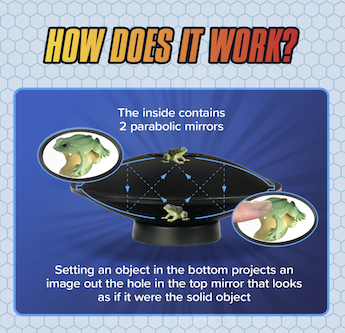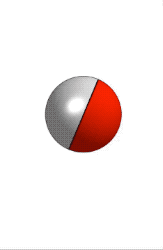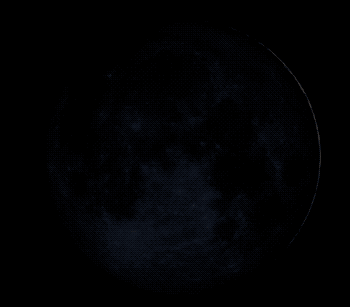| g e n u i n e i d e a s | ||||||
 |
 |
 |
 |
 |
 |
 |
| home | art and science |
writings | biography | food | inventions | search |
| reaching for the moon | ||||||||
| May 2024 | ||||||||
|
I like to think the moon is there even if I am not looking at it. --- Albert Einstein
The moon is a well-spring of mystery and wonderment- illuminating the night sky, captured in myth, and nudging the oceans into a tidal dance. Almost as soon as mechanical clocks were invented, horologists quickly rushed to display the moon's phases along with the passing hours. With varying degrees of success. For the last two years I've joined the long line of tinkerers seeking to mirror the moon's rhythms here on Earth. My first approach is in rooted in classical horology- a series of planar gears and cams, sequencing a series of vanes to define the lunar terminator between light and dark. Suited for watches or clocks. The LUNASE. A second approach, LUNASE CONIC combines fiber optic technology with ancient Greek geometry. Projecting a sphere into a planar ellipse. And the third approach, the LUNASE REFLECTION, sits uncomfortably between a hologram and a childish novelty- "reflecting" a lunar sphere into a three-dimensional "ghost". Floating like a real miniature moon above your desk. Anyone can rotate a solid sphere to display the lunar phases- but a hovering ethereal moon? That would be amazing. You may have played with this toy as a child, or at a science museum. From a distance the toy appears to be a black UFO with a round "occulus" in the center. Drop a rubber frog into the opening, stand in the exactly the right place, and a floating frog appears magically above the porthole. The frog is a true 3D real image- as you shift your gaze from side to side you can view every hidden curve of the amphibian. Your finger can even pass right through the projected image of the frog! So all we have to do is replace the frog with a half illuminated moon, rotate the moon once a synodic month, and the LUNASE REFLECTION is complete. Or is it? The "Mirage" effect was accidentally discovered by Caliste Landry in 1968 when he was dusting off some old surplus parabolic reflectors. He and a professor at UCSB patented (US3,647,284) the idea in 1970. Here is a modern example:
The UFO consists of two, face-to-face parabolic mirrors. Their mutual focal points are centered in opposing occuli. Clearly, the combination works as promised, but the "how" is a bit more complex than the package's explanation. On the right is a notional ray tracing- but look carefully. Rays from the frog's eyes are reflected to the ghost frog's webbed feet! Also, its magnifaction depends on the position of the real object relative to the bottom of the parabola. While the frog is pleasantly contorted by the mirror, with a large mouth and smaller feet, the distortion is more obvious with a symmetric object like a sphere. More careful ray tracing reveals part of the story, but still misses a key feature. It turns out if you slip a sheet of paper nearly halfway in the mid-plane (the red line I overlaid on a drawing from the patent, blocking half the rays), the projected real image persists, providing you look through the hole parallel to the paper's edge.
Only rays emitted by the frog in this general direction make it out of the occulus and to your eye. Since a lunar sphere only indicates the correct lunar phase from a single viewing angle, in principle the disc could be replaced by a sleeker UFO. Plus the open sides admit more light:
But one characteristic of the mirage effect IS accurately captured by these sketches- to view the projected image, you must peer at a ~45 degree angle to the mid-plane of the UFO. And that is a problem. The moon's rotation axis is almost perpendicular to its orbit around the Earth's1. If you view a rotating lunar bi-sphere (in this case the un-illuminated side is shown in red) at 45 degrees to the orbital plane, you can peer over the poles, spoiling the lunar phases as seen from Earth:
So, to integrate a rotating lunar bi-sphere into a parabolic UFO saucer, the axis of rotation must also be tilted by 45°. Then, viewed at 45 degrees through the occulus, the moon appears just as it does from Earth. Here is a cross-section of our prototype- the teal box is a battery operated clock with an internal lunar gear mechanism identical to the gear trains in the Lunase.
Here is a time-lapse of the prototype clock in operation- the white line indicates the correct viewing direction. And two black and white versions:
For maximum magnification with minimized distortion, the lunar sphere is offset from the center of the parabola. And for comparison, here is the actual appearance of the moon cycled through a complete month (NASA):
|
||||||||
| 1The moon's axis is tilted by around five degrees to the plane of its orbit around the Earth. So you can peak over the poles and view part of the far side of the moon at various times during the year- in the end, around 59% of the lunar surface is made visible from Earth as it "librates". The orientation of the crescent librates by ± 23.5 degrees because the Earth's rotation axis is that far tilted from the lunar orbital plane. From the perspective of an Earthling, this tilts the moon's axis in the opposite direction, just like the earth appears to tilt when viewed from from a banking plane. Both motions (plus a few other effects resulting from a slightly elliptical orbit) contribute to the NASA simulation. Note I used the phrase "far side" of the moon, as opposed to "dark side". The moon always faces the same direction to Earth due to "tidal locking", which long ago synced its rotational period around its own axis to match its rotation around the Earth. But, as the moon orbits the Earth, the far side faces the sun and is fully illuminated when our view of the moon is in darkness. See the NASA link above for details. |
||||||||
Contact Greg Blonder by email here - Modified Genuine Ideas, LLC. |








